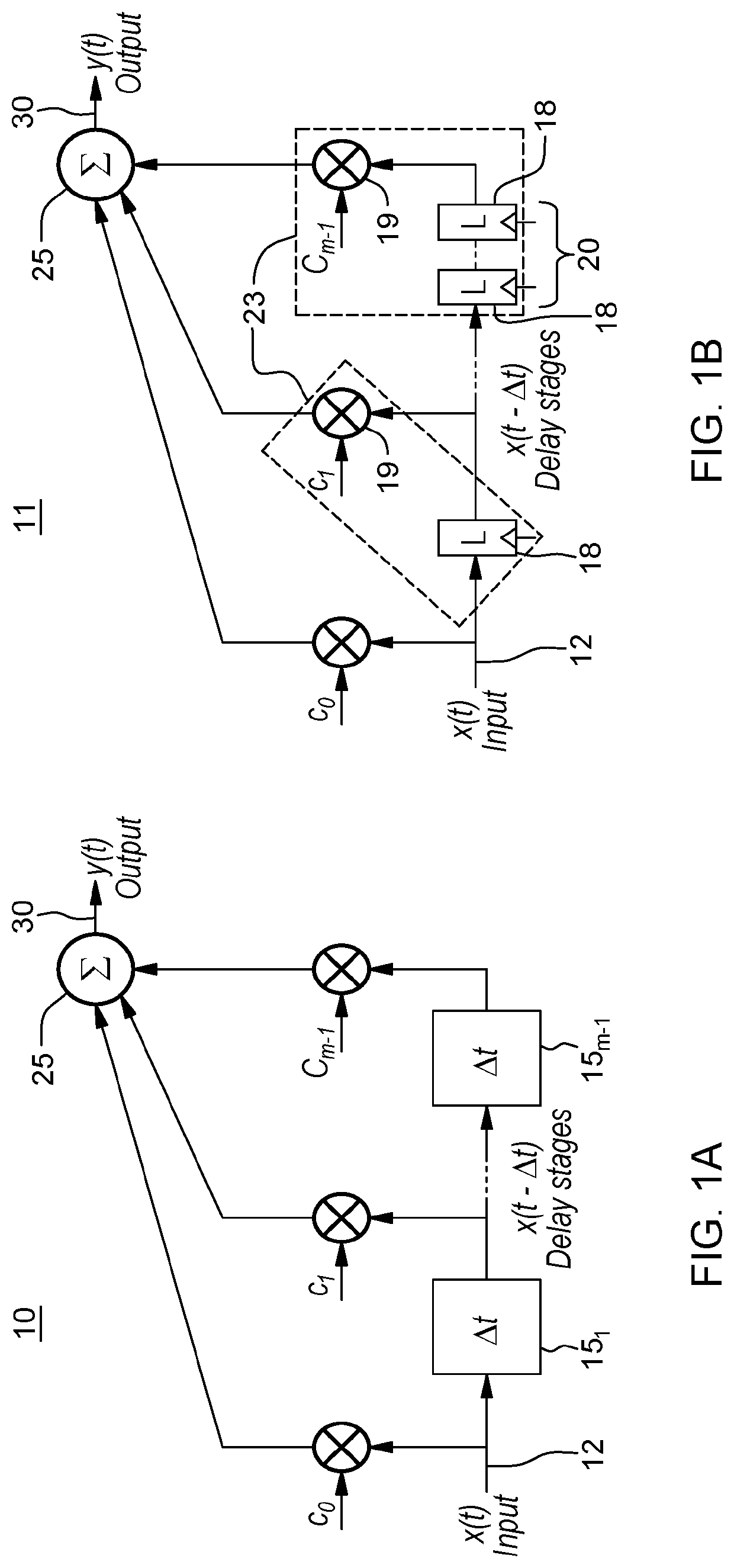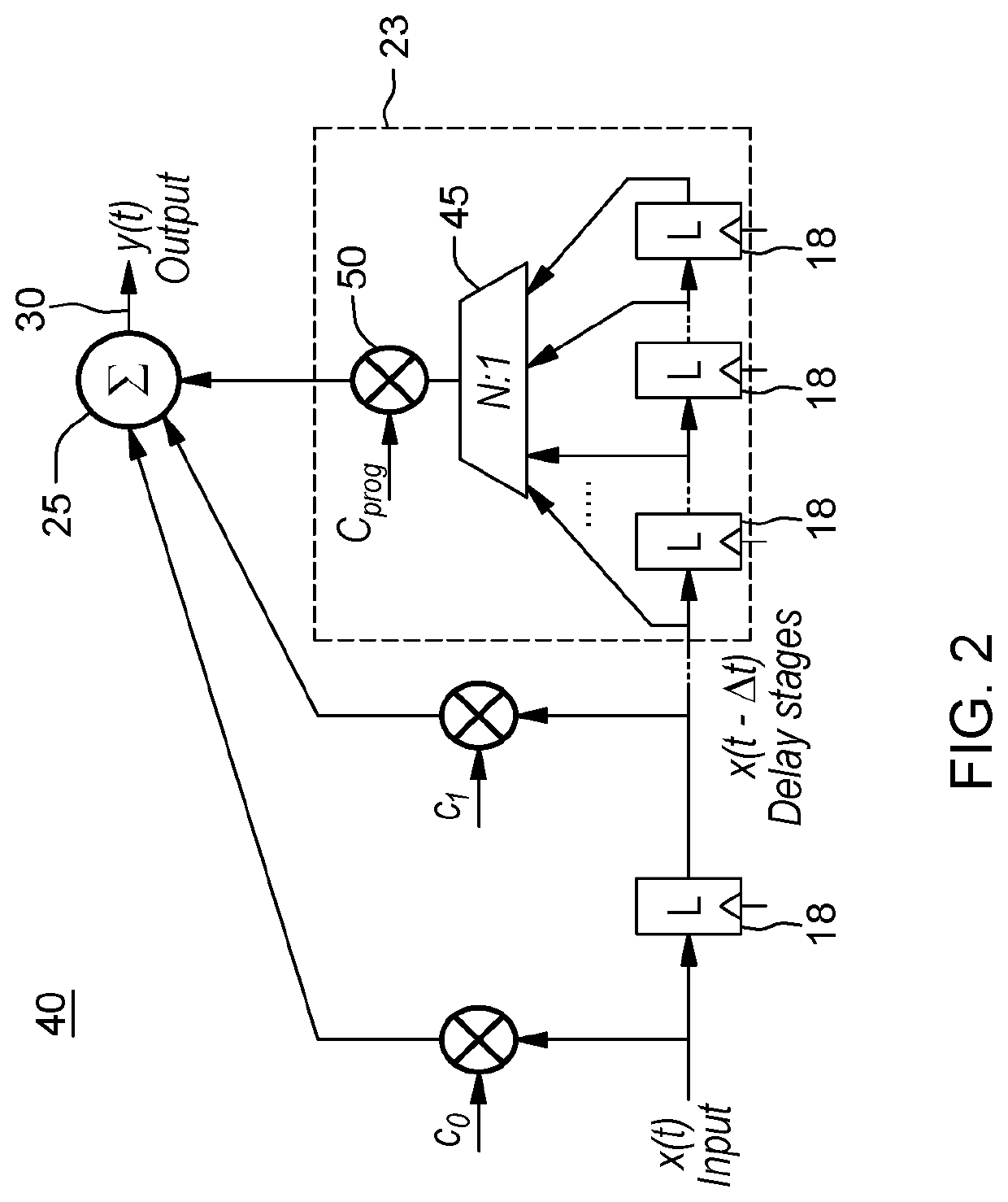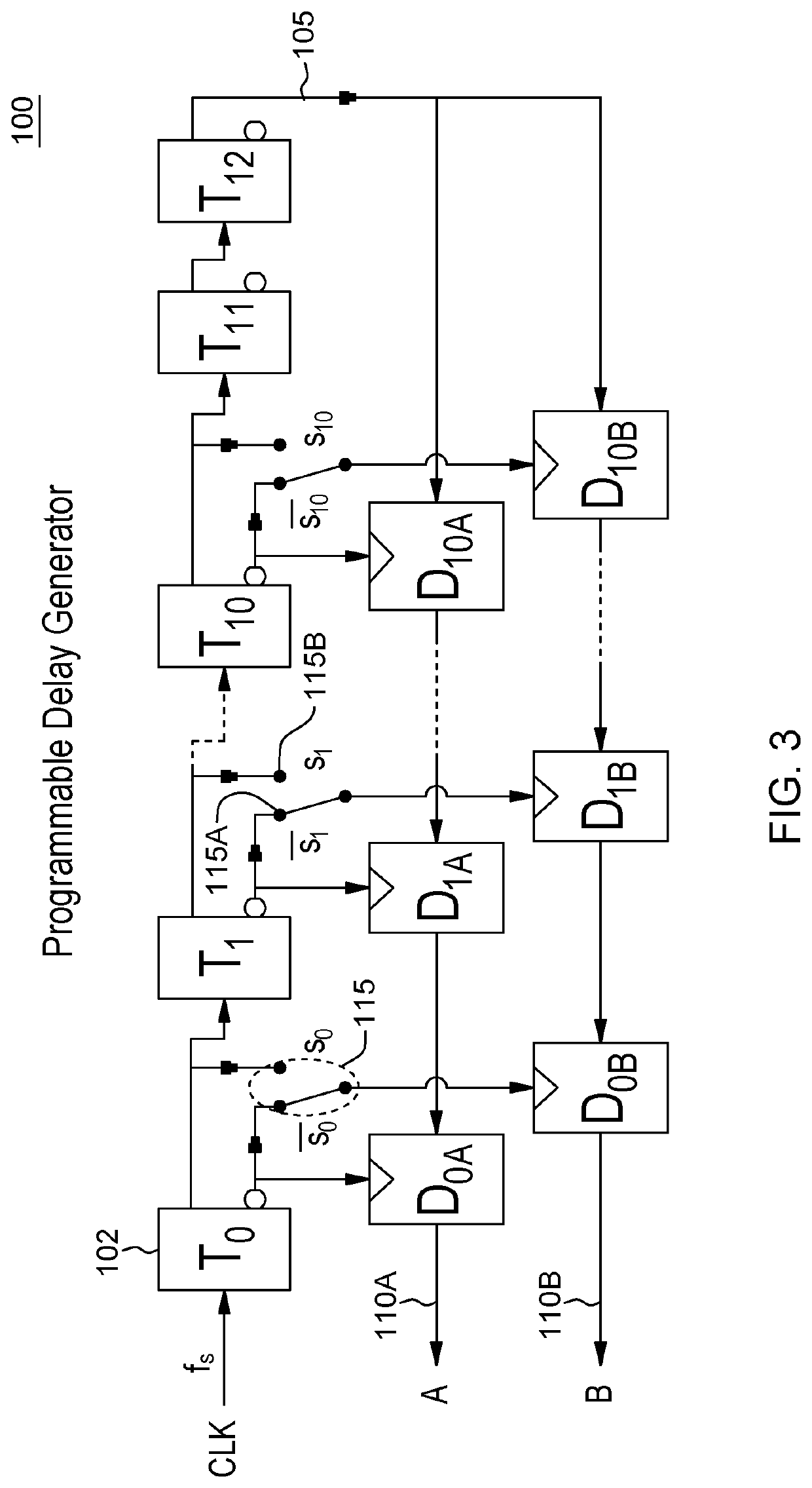Feedforward equalizer with programmable roaming taps
a roaming tap and equalizer technology, applied in equalisers, digital transmission, synchronous/start-stop systems, etc., can solve problems such as frequency-dependent attenuation
- Summary
- Abstract
- Description
- Claims
- Application Information
AI Technical Summary
Benefits of technology
Problems solved by technology
Method used
Image
Examples
Embodiment Construction
[0026]The present disclosure relates to an improved transmit-side feedforward equalizer (FFE) by providing an FFE with a programmable roaming tap generator integrated into the data serializer.
[0027]FIG. 1A presents a block diagram of an m-tap FFE 10 showing an input signal 12 being fed through multiple delay stages 151, . . . , 15m-1. The input signal 12 is linearly multiplied with a weighted tap coefficient c0, and each of the respective delay stage outputs is multiplied with a respective weighted tap coefficient (c1, . . . , cm-1) to generate respective FFE tap signals. In an embodiment, FFE taps are selected to generate a filter with the inverse transfer function of the communications channel carrying the signal, e.g., printed circuit board (PCB) conductors, connectors, cables, etc. As shown in FIG. 1A, each resulting FFE weighted tap signal (the product of a delay stage output and a tap coefficient) at each stage is combined (added together) by summation element 25 and output to...
PUM
 Login to View More
Login to View More Abstract
Description
Claims
Application Information
 Login to View More
Login to View More - R&D
- Intellectual Property
- Life Sciences
- Materials
- Tech Scout
- Unparalleled Data Quality
- Higher Quality Content
- 60% Fewer Hallucinations
Browse by: Latest US Patents, China's latest patents, Technical Efficacy Thesaurus, Application Domain, Technology Topic, Popular Technical Reports.
© 2025 PatSnap. All rights reserved.Legal|Privacy policy|Modern Slavery Act Transparency Statement|Sitemap|About US| Contact US: help@patsnap.com



